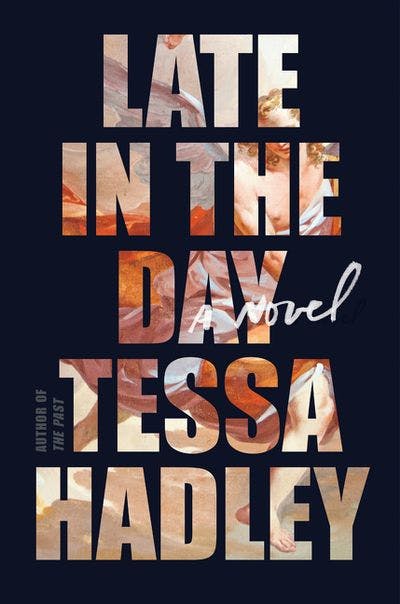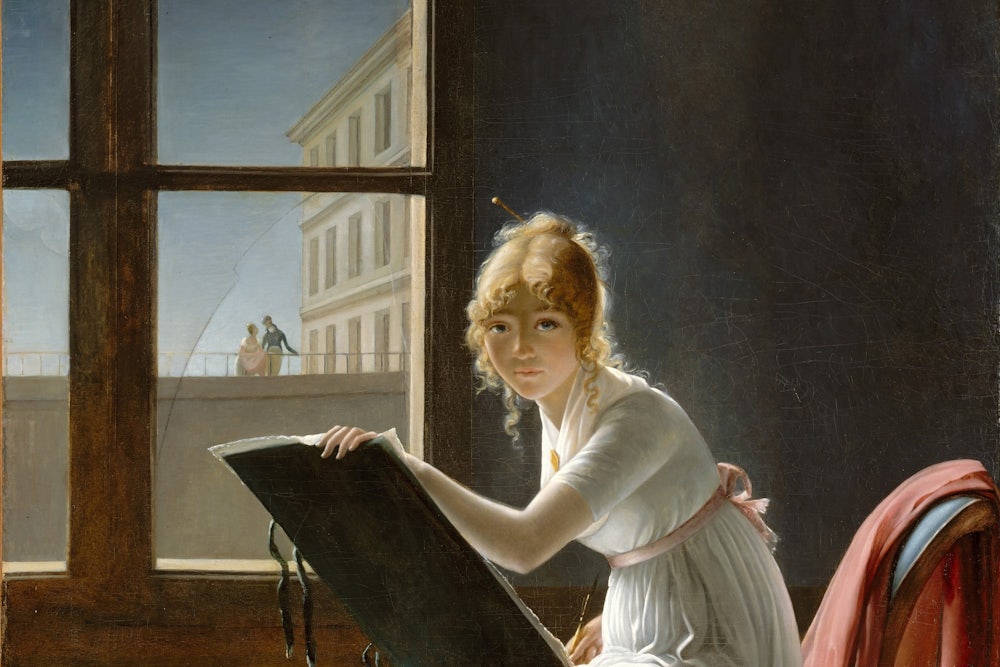When the last of my parents’ “cool” friends got divorced, certain things became apparent to me. First, that being a creative, interesting woman makes it more rather than less likely that your husband will leave you for an improved model in your middle years. Second, that the vibrancy beamed out from a marriage gives no indication of how likely it is to fail. Third, that I would never understand why any of this had happened.
When I turned the final page of Tessa Hadley’s new novel Late in the Day, therefore, it was with the stunned feeling of having finally received an explanation. Hadley’s seventh novel is the story of Christine’s disintegrating marriage, and what she gains from its loss. The book begins with Christine married to Alex, and her best friend Lydia married to Zachary. Then the telephone call comes: Zachary is dead.
Amidst the grief and chaos, Lydia is folded in the bosom of Christine’s family. Hadley then takes us right back to the beginning, about how these couples were formed. Once we have caught back up to the present day, we know enough for Hadley to progress into autopsy: Christine and Alex are done for, and for once we know exactly why.
We meet Christine in domestic medias res, no idea what is coming. It is nine o’clock in the evening, and she is listening to the music “with intensity” shortly before the telephone rings with the news of Zachary’s death. She doesn’t know what the music is exactly: “Alex had chosen it, he hadn’t consulted her and now she stubbornly wouldn’t ask—he took too much pleasure in knowing what she didn’t know.”
Reading Late in the Day feels both prurient—we are so deeply inside the emotional rhythms of this home—and marvelous, in its elevation of a boring middle-class marriage into a fable of warring identities. Alex is the person who chooses the music but withholds his knowledge; Christine listens and enjoys, but cannot meet her husband at his level. We immediately learn that their power struggle has been mapped over every single aspect of their shared life.
It is a long, long journey to that kind of charged terrain. Christine and Lydia made friends at school, the former thin and awkward and the latter charming, gorgeous, disarming. Before we hear anything of the men in their lives, we read of the way they became themselves, as they felt the void of adulthood yawn before them. Lydia senses that “something more was called for, and she dreaded testing her reserves of imagination and energy, finding them empty.” Christine works on a PhD but “couldn’t really fill all the hours of her day, or all the space inside her. And so she too, like Lydia, lived in a strange suspended state, expecting to discover something more serious to be the business of her life.” To fill those hours, Christine begins to draw.

Although Hadley gives us no big announcement that something crucial is happening, the girls are, in a way, doomed. Alex, the object of Lydia’s affections, decides that he loves Christine. Lydia is left with Zachary, who until then had dated Christine, because it just seems the obvious match. Everybody is happy in love, happily procreating, and happy in their friendship. Both couples are artistic, living among the stimulating abundance of liberal London. Life is comfortable and life is good.
When Zachary dies unexpectedly, however, both women lose their means of expression. The loving sensualist Lydia loses the person who defines her. Christine, who produces drawings and prints, suddenly, without explanation, can no longer work. On the day that Zachary dies, she turns the key in the lock of her study door and does not re-enter it throughout the novel’s chief action.
The creative arts and romantic love become braided themes in Late in the Day. Alex is a poet, Zachary a gallerist, Christine an artist. Lydia does nothing, but her daughter Grace is a sculptor. Isobel, Christine’s daughter, has no art in her life, but she loves Grace like a sister, and the implicit threat is that she will end up like Lydia, a woman who can only express herself through devotion to other people. Art becomes allegory for the problem of identity in Hadley’s hands.
Christine and Alex are both artists, and that in the end is their relationship’s fatal flaw. Christine, because she is a woman, is able to love Alex, create art, and appreciate Alex’s work all at once. But Hadley shows us in a conversation between the husbands that Alex is not as generous. Alex is stuck, unable to write. Zachary wonders, consoling him, whether he feels an “inhibition” because men live “in the aftermath, with nothing left to say.” Zachary himself has pondered whether “women have been exempted from certain forms of self-doubt, which might be gendered.”
“Gendered?” Alex does not know what he means. But Zachary has struck upon a truth. “Now that women have picked up the pen—for writing, for painting, for everything,” he says, “they may feel all kinds of doubt but not that one. Because they’re not belated. As women they’re still near the beginning.” Still, Alex does not get it, thinks it’s a political pose. But Zachary goes on, describing Christine’s work, of which he is a fan. “How has she been able to make her art so freely? It’s poured out of her, hasn’t it? Why hasn’t she felt the heavy hand on her shoulder?” With a shock, Zachary sees on his friend’s face that he has never taken his wife seriously, is startled “to have Christine’s work invoked in the same scale as anything he, Alex, might have done.”
And so Alex is, in the end, no artist at all; he cannot see quality when it is in front of him. Lydia is no artist either, only a connoisseur of men. So, after Zachary’s death, the inevitable happens. Without him, there is nobody left to be Christine’s audience, and so she cannot create. Without being seen, she cannot love; without love, there is no marriage. On the other side of divorce, at long last, Christine realizes that the key to her study is still within her reach.
Fiction about women in midlife is sometimes marketed insultingly. Barnes & Noble has a section on its website called “Women of a Certain Age,” and it’s full of Danielle Steele pulp and books like The Hot Flash Club. But Late in the Day joins a tradition of literature about women who, later in life, realize that they have trapped themselves in bourgeois prisons of their own making, and break free.
These books range from the cheeky fun of Colette’s Break of Day (1928) to Simone de Beauvoir’s pompous but elegant Force of Circumstance (1963), a book full of derisive portraits of men still desperate to find themselves, while she sits pretty in her hard-won self-awareness. More recently, readers have met women brutalized by time into a radical intelligence in Jennifer Egan’s A Visit from the Goon Squad and Jane Alison’s Nine Island.
In 1988, Carolyn G. Heilbrun wrote in The New York Times that it “is perhaps only in old age, certainly past 50, that women can stop being female impersonators, can grasp the opportunity to reverse their most cherished principles of ‘femininity.’” Here I do not think that Heilbrun means prettiness or sexuality. Instead she is writing of women’s approaches to the project of their own lives. While impersonating the idea of a woman, a person cannot survive the end of youth. But self-actualized women over 50, she writes, “differ from men, who if they need discover new courage, need not profoundly change their lives, need not dedicate them to something new, only perhaps more intensely to their old ambitions.” For women, new insight into one’s creative powers in later life requires a wrench, a rejection—even an abnegation of old responsibilities.
If Heilbrun is right, and older women must face down this crisis in a way that men do not, then it is a wonder that we do not read more great novels about post-menopausal artistic revelations. There is much in Hadley’s novel to distract you from its core discussion on gender and art: Christine is preoccupied by her duties as a mother, as the person who buys flowers and cooks pasta. And so she distracts us in turn, disguising her abilities as an artist from the reader.
Why did I witness all those divorces with such terror, as a child? I feared for my home, I suppose, but mostly for myself. If I had picked out these interesting women as role models, and then they had been discarded so easily, then my own life seemed fated to turn out the same way. But no style of living is compulsory, Tessa Hadley teaches. There is always a choice, even when somebody else chooses for you. For any reader interested in the relationship between romantic love and the creative life, Late in the Day unfurls into a tale both cautionary and motivating. The novel’s end is its heroine’s beginning; the sequel is there to be lived.
